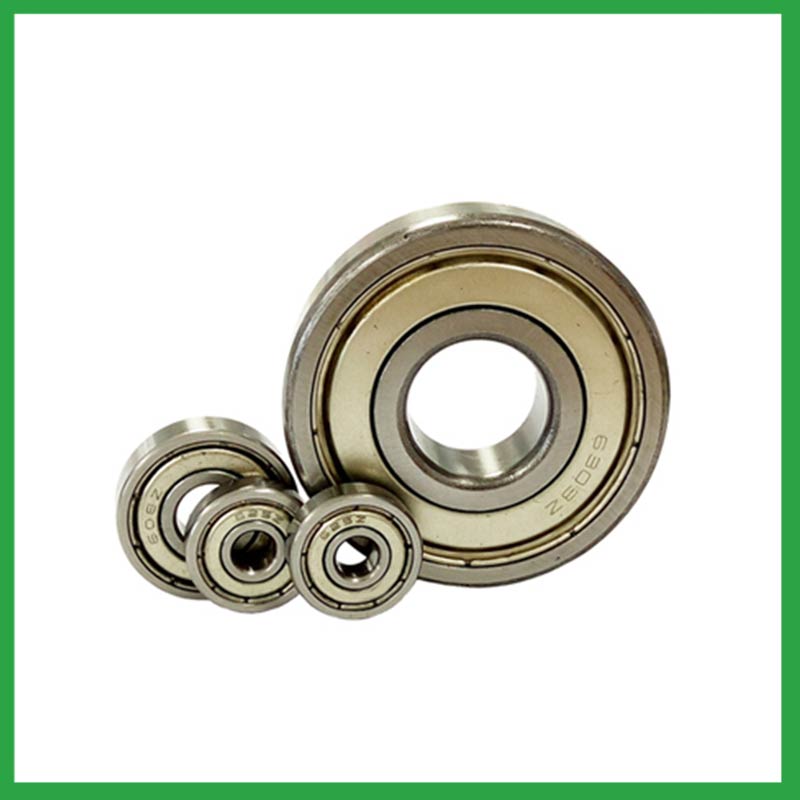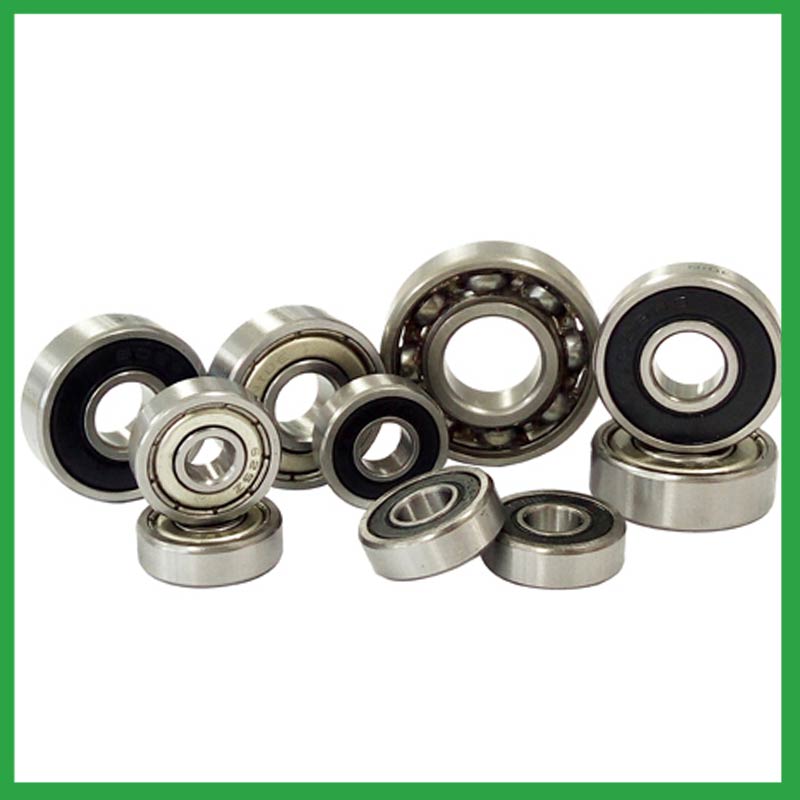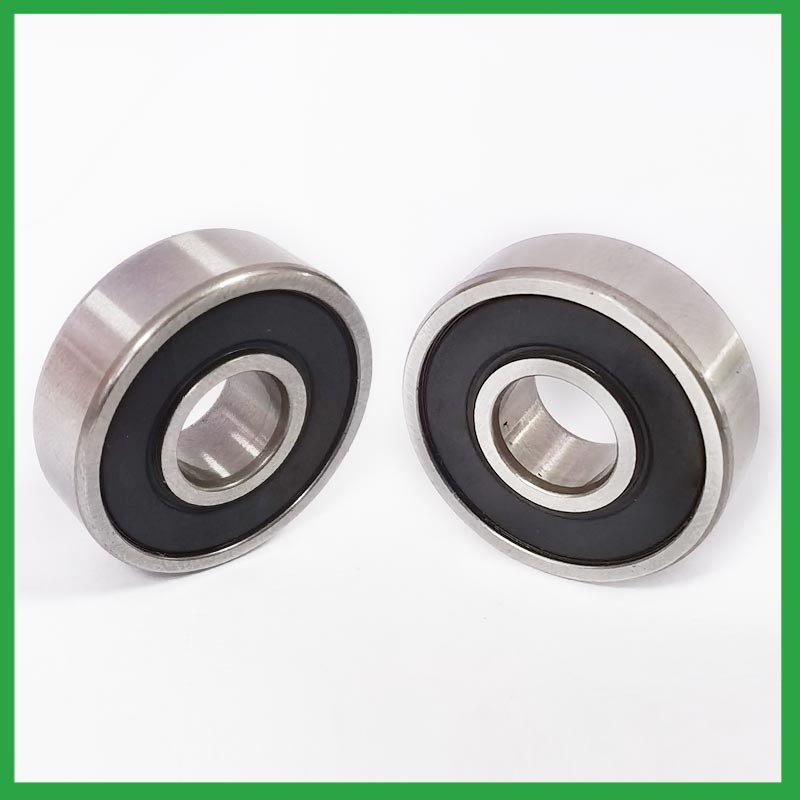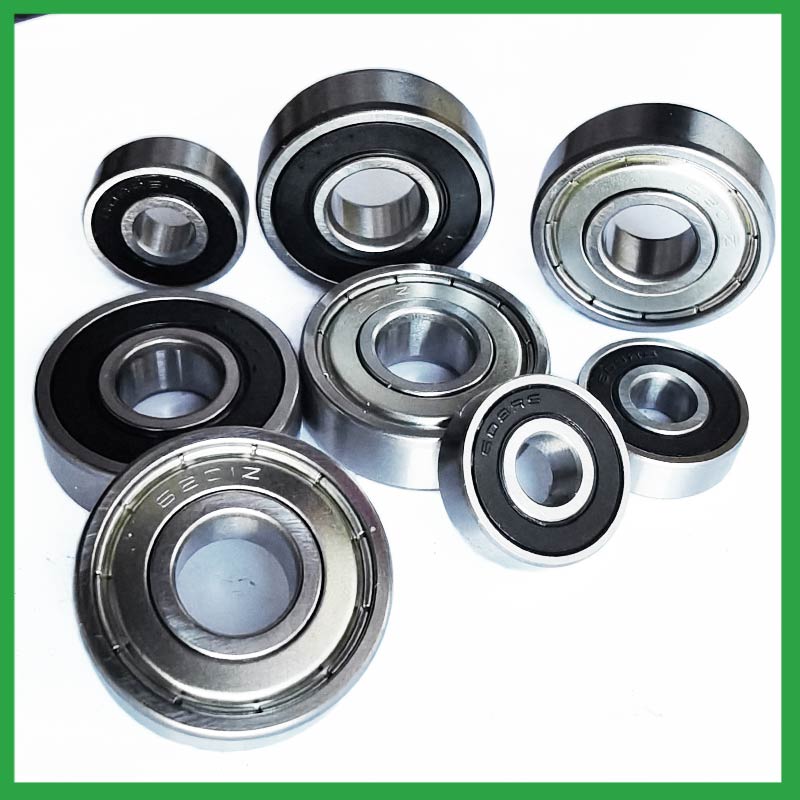PRODUCTS
CONTACT US
Ningbo Nide International Co., Ltd.
一一
· Contact person:Jack Zeng
· Mob/Whatspp/WeChat:0086-13738869026
· Email:emarketing@nide-group.com;marketing4@nide-group.com
· Add:No. 169, Wohushan Road, Daqi Subdistrict, Beilun District, Ningbo, China

Nide team could manufacture ball bearing as per customer’s drawing and samples.
If customer only has samples, we could also design drawing fo r our customer.
We also provide customized service.
Our ball bearing is widely applied the different industrials.
Ningbo Haishu Nide International Co., Ltd was established in 2010. We produce ball bearing,fan,magnet,motor cover and lamination,carbon brush,insulation paper,thermal protector and other products. Our unwavering commitment to quality has been recognized by the National Testing Center and the Zhejiang Provincial Testing Center. We adhere to ISO 9001:2015 and CE statior standards, prioritize quality, and operate with integrity.
We prioritize quality and first-class service, constantly pursuing perfection. We have a deep understanding of the precise needs of our customers, and our important motor component manufacturing network and strict quality control system enable us to provide high-quality products to customers at reasonable prices.

| Parameter | Information |
|---|---|
| Product Name | 8mm ball bearing |
| Brand Name | NIDE |
| Place of Origin | Ningbo,Zhejiang,China |
| Material | stainless steel, etc. |
| Structure | Deep Groove |
| Color | Customized Color |
| Delivery Time | 5-7days |
| Port | Ningbo/Shanghai |
| Export region | America,Europe,Oceania |
| Export Country | India,Brazil,South Korea,Zambia,Holy See (Vatican City),Cuba,Belarus...etc |
| Application | aviation engines,automotive engines, etc. |
| OEM/ODM | Acceptatble |
| Size | Customized size |
| Stock | In Stock |
| Feature | High precision,Simple structure...etc |
| MOQ | 10 pieeces(Specific according to the model) |
| Certification | ISO9001,CE-stator coil forming machine,CE-stator coil lacing machine,etc |
| Supply Ability | 100000-500000 Piece/Pieces per Month |
| Lubricate | Oil Grease |
| Packaging Details | Suitable for sea transportation |
| Lead time (days) | 15-20 (To be negotiated) |
Please note: The above table data is for reference only. For specific information, please contact us.
8mm ball bearing require thrust for installation, which can be achieved by using a combination ring made of steel sleeve and transmission rubber, or by using an adjustment plate to tighten the bolt to form a combination ring installation structure.
During the installation process, pollution from dirt and wear media should be prevented;
Temperature and humidity should be controlled to avoid excessive temperatures during startup and operation;
It should be operated and lubricated in the correct reverse direction to avoid unnecessary damage.
Ball bearings have many advantages, making them highly competitive in the market.
Firstly, they are very durable and have good wear performance, making their service life longer than many other types of bearings.
Secondly, they are easy to install and can provide low friction performance in various applications.
Thirdly, they require a relatively low level of maintenance, making them cost-effective.
In addition, compared to many other types of bearings, their purchase cost is relatively low, making them an economical choice.




8mm ball bearing---FAQs Guide
2.How do preloaded 8mm ball bearing enhance rigidity and reduce clearance in high-precision applications?
3.About 8mm ball bearing,Will you check the products before shipment?
4.Are there ceramic 8mm ball bearing designed for specific applications requiring high-temperature or corrosion resistance?
5.Can 8mm ball bearing be customized with special coatings or treatments to meet specific industry standards or regulatory requirements?
6.Can 8mm ball bearing be used in vacuum or cleanroom environments, and what measures are taken to prevent outgassing or contamination?
7.Can 8mm ball bearing operate in high-speed applications, and what design features make them suitable for such conditions?
8.Are there miniature 8mm ball bearing designed for use in precision instruments and small-scale mechanisms?
9.Where can 8mm ball bearing be used?
10.About 8mm ball bearing,Can I add my own logo?
11.What is the load distribution within a 8mm ball bearing, and how does it vary between different bearing configurations?
12.What is a ball bearing?
13.How do 8mm ball bearing handle radial loads, axial loads, and combined loads, and what are their load-carrying capacities?
14.Are there self-aligning 8mm ball bearing that accommodate misalignment and shaft deflection in rotating equipment?
15.Can 8mm ball bearing handle shock loads and high-impact conditions in heavy machinery?
1.How do 8mm ball bearing contribute to the overall efficiency and energy savings in industrial machinery and transportation systems?
The balls roll along the raceway, allowing for smooth rotation of the machinery or equipment. Ball bearings are used to support rotating, reduce friction and support radial and axial loads in high-load, high-speed applications where reliability and efficiency are critical.
2.How do preloaded 8mm ball bearing enhance rigidity and reduce clearance in high-precision applications?
Enhance Rigidity: By applying a controlled axial force, preload increases the bearing's resistance to external forces and moments. This heightened rigidity is essential in applications where any deflection or misalignment must be minimized, such as in machine tools or robotic systems.
3.About 8mm ball bearing,Will you check the products before shipment?
Yes, We have a professional QC team. Products will be strictly inspection before shipment.
4.Are there ceramic 8mm ball bearing designed for specific applications requiring high-temperature or corrosion resistance?
Ceramic 8mm ball bearing are a special type of bearing made of ceramic materials, offering superior wear resistance, corrosion resistance, and high-temperature performance. They provide excellent performance in applications requiring high speeds, high temperatures, and resistance to corrosion.

5.Can 8mm ball bearing be customized with special coatings or treatments to meet specific industry standards or regulatory requirements?
Yes, 8mm ball bearing can be customized with special coatings or treatments to meet specific industry standards or regulatory requirements.
1. Corrosion-resistant coatings: These coatings are used to protect the bearings from corrosion caused by exposure to moisture, chemicals, and other corrosive substances.
2. High-temperature coatings: These coatings are used to improve the thermal stability and performance of bearings in high-temperature environments.
3. Food-grade coatings: These coatings are specially designed for applications in the food and beverage industry, where bearings come into contact with food, beverage, or pharmaceutical products.
4. Anti-static and non-conductive coatings: These coatings are used to dissipate static electricity, which can cause damage to electronic components.
5. Specialized lubrication treatments: Bearings can be treated with specialized lubricants that meet specific industry standards or regulatory requirements.
6.Can 8mm ball bearing be used in vacuum or cleanroom environments, and what measures are taken to prevent outgassing or contamination?
Bearings specify stainless steel for vacuum or cleanroom applications as stainless steels used for the rings, balls and retainer exhibit low outgassing. They usually supply open or shielded stainless steel bearings as vacuum bearings as these will outgas less than a nitrile rubber sealed bearing.
7.Can 8mm ball bearing operate in high-speed applications, and what design features make them suitable for such conditions?
They have very low rolling friction and are optimized for low noise and low vibration. This makes them ideal for high-speed applications. 8mm ball bearing are comparatively easy to install and require minimal maintenance.
8.Are there miniature 8mm ball bearing designed for use in precision instruments and small-scale mechanisms?
Miniature bearings, despite their small size, play a significant role in various industries and applications. These compact powerhouses, typically measuring less than one inch in outer diameter, offer exceptional precision, durability, and reliability. Miniature bearings find extensive use in precision instruments and robotics.

9.Where can 8mm ball bearing be used?
8mm ball bearing are very versatile. They can be designed to withstand radial loads, axial loads and combined radial/axial loads at various operating speeds. These characteristics, combined with the relative cost and compactness of the design, give it universal appeal within the industry. Ball bearings are widely used in electric motors, gear reducers and pumps. Serving the automotive, home appliances, aerospace, oil and gas drilling, and mining sectors.
10.About 8mm ball bearing,Can I add my own logo?
Yes, you can add your logo on bearings and packing box. We supply OEM SERVICE including bearing's size, logo, packing, etc.
11.What is the load distribution within a 8mm ball bearing, and how does it vary between different bearing configurations?
The load distribution between the rolling elements and raceway is crucial in performance evaluation of rolling element bearings. Determine the load distribution by measuring the strain response at the bearing surface with a notched housing. Finite element analysis shows that the introduction of notches does not affect the load distribution. An experimental system was developed to investigate the load distribution in a cylindrical roller bearing. The experimental static load distribution agrees well with the theoretical calculation. The dynamic load at specific position of load zone reflects the manufacture difference among rollers and dynamic balance of distributing loads.
12.What is a ball bearing?
A ball bearing is a type of rolling-element bearing that uses balls to maintain the separation between the bearing races.
The purpose of a ball bearing is to reduce rotational friction and support radial and axial loads. It achieves this by using at least two races to contain the balls and transmit the loads through the balls. In most applications, one race is stationary and the other is attached to the rotating assembly (e.g., a hub or shaft). As one of the bearing races rotates it causes the balls to rotate as well. Because the balls are rolling they have a much lower coefficient of friction than if two flat surfaces were sliding against each other.
Ball bearings tend to have lower load capacity for their size than other kinds of rolling-element bearings due to the smaller contact area between the balls and races. However, they can tolerate some misalignment of the inner and outer races.

13.How do 8mm ball bearing handle radial loads, axial loads, and combined loads, and what are their load-carrying capacities?
The type of bearing used also varies between these loads. While deep-groove 8mm ball bearing are better equipped to handle radial loads, thrust ball bearings are designed for axial loads. However, it's essential to note that most bearings, such as angular contact ball bearings, can handle both radial and axial loads.The Bearing Static Capacity, Co, is the maximum load that can safely be applied to a non-rotating bearing that will not cause subsequent bearing operation to be impaired. It is based on calculated contact stress at the center of the most heavily loaded rolling element where it contacts the Inner Race.
14.Are there self-aligning 8mm ball bearing that accommodate misalignment and shaft deflection in rotating equipment?
These 8mm ball bearing are particularly suitable for applications where misalignment can arise from errors in mounting or shaft deflection. A variety of designs are available with cylindrical and taper bores, with seals and adapter sleeves and extended inner rings.
15.Can 8mm ball bearing handle shock loads and high-impact conditions in heavy machinery?
As a general rule, 8mm ball bearing are used at higher speeds and lighter loads than are roller bearings. Roller bearings perform better under shock and impact loading. Ball bearings tolerate misalignment better than roller bearings do. Roller bearings can handle heavy combined radial and thrust loads.

